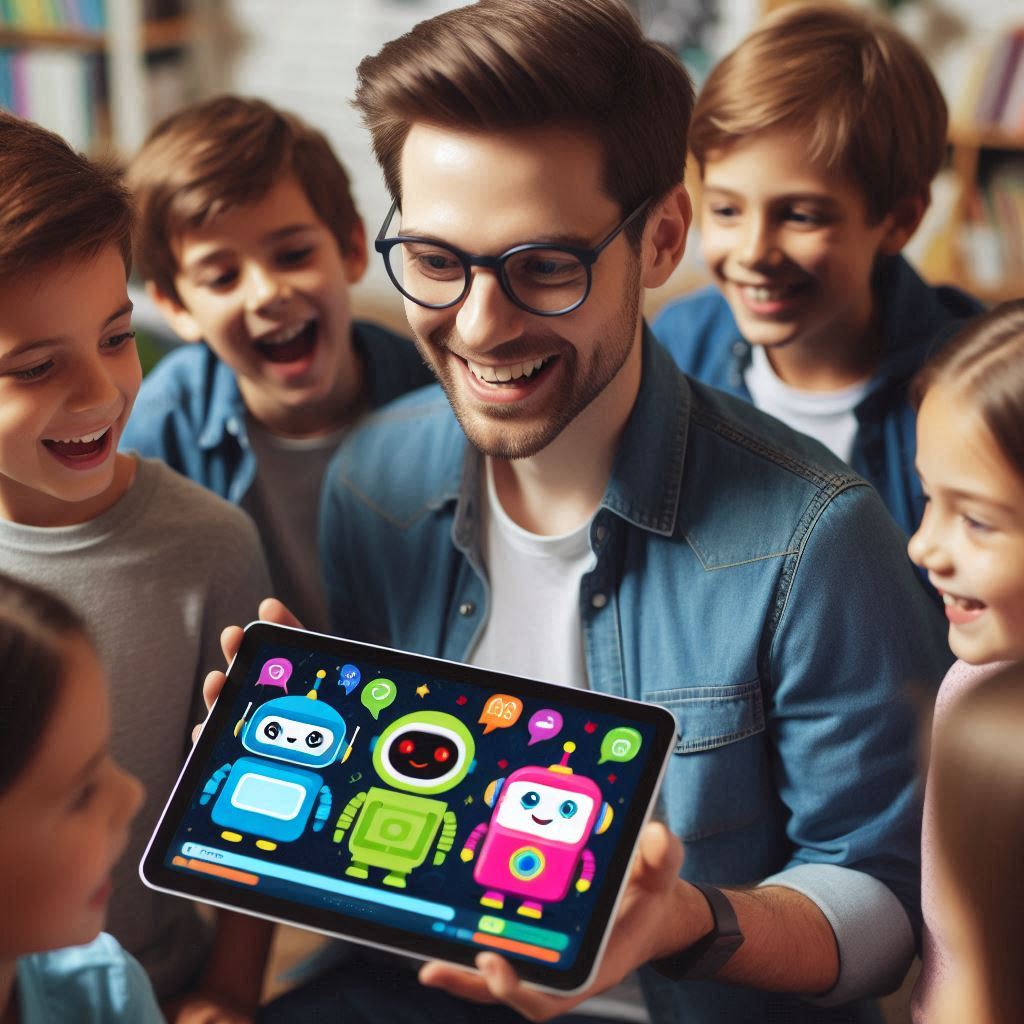Chatbots are software applications that use artificial intelligence (AI) and natural language processing (NLP) to simulate human-like conversations with users.
They have become increasingly popular in recent years due to their ability to provide efficient, personalized, and 24/7 customer support.
In this blog post, we will explore the various types of chatbots, their use cases, benefits, challenges, and the future of chatbot technology.
What is a Chatbot?
A chatbot is a piece of software powered by artificial intelligence (AI) that businesses use to communicate with clients via live chat, website-based instant messaging services, mobile apps, or phone calls.
Many chatbots create human conversation and interact with customers in real-time using technologies like machine learning, natural language processing, and natural language understanding (NLU).
Chatbots are often seen as sophisticated AI applications.
Customers can communicate with them instantly, cutting out the waiting time associated with live staff members.
Little surprise, businesses are integrating them into their customer support offerings.
Unfortunately, some bots may also increase customer annoyance.
However, when well-designed and equipped to answer questions, customer happiness and user experience may slightly improve due to the prompt assistance and personalized help.
Having said that, they can differ.
Companies have the option of using straightforward answering services that adhere to a precise script.
Businesses may, however, also opt for a more sophisticated digital assistant that provides pertinent, human-like answers per the context of the discussion.
Read: Best Practices for Integrating Chatbots Into Your Website or App

How Do Chatbots Work?
Chatbots can be stateless or stateful, and their levels of complexity differ.
Innovative Tech Solutions, Tailored for You
Our leading tech firm crafts custom software, web & mobile apps, designed with your unique needs in mind. Elevate your business with cutting-edge solutions no one else can offer.
Start NowStateless bots handle every interaction as though it were with a different user.
Stateful bots, on the other hand, can look back on previous conversations and contextualize new answers.
You need little to no coding to integrate a chatbot into your service or sales section.
Thanks to the availability of many chatbot service providers, technical and non-technical users can create conversational user interfaces for third-party business apps.
Choosing the correct natural language processing (NLP) engine is important before implementing a chatbot.
The chatbot needs a speech detection engine, for instance, if the user communicates with the bot by voice.
Furthermore, business owners must choose between having structured and unstructured talks.
The scripted nature of chatbots designed for structured interactions makes programming easier but limits the types of questions that users can pose.
In B2B environments, chatbots answer frequently asked questions or perform simple, repetitive tasks.
For instance, they can help sales representatives rapidly obtain phone numbers.
Read: The Benefits and Drawbacks of Using Chatbots for Customer Service
Types of Chatbots
Chatbots can be classified into two categories: Rule-based and AI-powered.
Rule-based chatbots
Rule-based chatbots are the basic, scripted versions of chatbots.
They follow a set of rules and predefined responses based on keywords and phrases.
These chatbots are limited in functionality and cannot learn or adapt to user inputs.
Examples of rule-based chatbots include the chatbots used on websites for basic customer service inquiries or automated phone systems for customer support.
AI-powered chatbots
On the other hand, AI-powered chatbots use machine learning algorithms to understand user inputs, learn from interactions, and provide personalized responses.
They use NLP to understand the user’s intent and can respond to open-ended questions.
They are more advanced than their rule-based counterparts and can learn from past interactions to provide a better experience for users.
Examples of AI-powered chatbots include Apple’s Siri, Google Assistant, and Amazon’s Alexa.
Related: The Evolution of Customer Service: From Call Centers to Chatbots
Use Cases of Chatbots
Chatbots have numerous use cases across different industries. Here are some examples:
- Customer Service: They are used by businesses to provide 24/7 customer support, answer common queries, and resolve issues quickly. For instance, airlines use chatbots to provide flight information, hotels use them to answer reservation queries, and e-commerce websites use them to track orders and returns.
- Sales and Marketing: Businesses use chatbots to provide personalized recommendations, promote products, and generate leads. For example, a clothing store can use a chatbot to suggest outfits based on a customer’s preferences, or a real estate agent can use a chatbot to provide information on properties.
- E-commerce: They are used by e-commerce websites to streamline the buying process, provide personalized recommendations, and handle customer queries. For instance, a chatbot can guide customers through the checkout process or provide information on product features and specifications.
- Healthcare: Chatbots are used by healthcare providers to provide medical assistance, monitor patient health, and provide medication reminders. For example, a chatbot can help patients schedule appointments, provide information on common medical conditions, or remind patients to take their medication.
- Education: They are used by educational institutions to provide virtual tutoring, answer student queries, and provide personalized feedback. For instance, a chatbot can help students with their homework, provide feedback on essays, or help students prepare for exams.
- Finance: Chatbots are used by financial institutions to provide financial advice, assist with banking transactions, and answer customer queries. For example, a chatbot can help customers with account balances, provide investment advice, or help customers dispute a fraudulent transaction.
- Travel and Hospitality: They are used in the travel and hospitality industry to assist with booking flights and accommodations, answer questions about travel destinations, and even provide personalized travel recommendations based on customer preferences.
Read: AI Chatbots: How Natural Language Processing (NLP) Works
Benefits of Chatbots
Chatbots provide numerous benefits to businesses, including the following:
Seamless API Connectivity for Next-Level Integration
Unlock limitless possibilities by connecting your systems with a custom API built to perform flawlessly. Stand apart with our solutions that others simply can’t offer.
Get StartedImproved Customer Support
With a chatbot, businesses can provide 24/7 support to customers, ensuring that they receive assistance whenever they need it.
It can quickly and efficiently respond to customer queries, providing accurate information and resolving issues promptly.
By providing quick and efficient customer support, businesses can improve customer satisfaction and loyalty.
Cost-Effective
A chatbot can handle a high volume of queries simultaneously, reducing the need for human customer support agents.
This can save businesses a significant amount of money on customer support costs.
Also, it can handle routine queries, allowing human agents to focus on more complex queries, making better use of their time and skills.
Increased Efficiency
Chatbots are available 24/7 and can handle multiple queries at the same time, improving the efficiency of business operations.
This means that businesses can handle a higher volume of customer queries without needing to increase their customer support team size.
Also, they can provide instant responses to customers, reducing response time and improving overall customer experience.
Personalization
A chatbot can provide personalized recommendations and support to customers.
Using customer data, it can suggest products, offer tailored deals, and recommend additional services.
This enhances customer experience and builds brand loyalty, as customers feel that the business is paying attention to their individual needs and preferences.
Data Collection
Chatbots can collect data on customer interactions, including customer queries, purchase history, and preferences.
This information helps businesses gain insights into customer behavior, better understanding their needs and preferences.
Businesses can use this data to improve customer service, marketing strategies, and product development.
Scalability
Chatbots are highly scalable, meaning that they can handle a large volume of queries simultaneously.
As businesses grow and their customer base expands, they can be easily scaled to handle the increased volume of customer queries.
This makes them ideal for businesses of any size, as they can be tailored to meet the needs of any size of customer base.
Challenges of Chatbots
While chatbots provide numerous benefits, there are also some challenges that businesses need to consider when implementing them.
These challenges include:
- Limited Functionality: Rule-based chatbots have limited functionality and cannot handle complex queries or understand the context. AI-powered chatbots are more advanced, but they still have limitations in understanding human language and may misinterpret user inputs.
- High Initial Investment: Implementing them requires a significant initial investment in software development, integration, and training.
- Maintenance and Upgrades: They require regular maintenance and upgrades to keep up with the changing technology landscape and to improve their performance.
- Privacy and Security: They collect sensitive customer data, and businesses need to ensure that they have robust privacy and security measures in place to protect this data.

The Future of Chatbots
The future looks promising for this technology, with advancements in AI and NLP technology.
Some of the trends that we can expect to see in the chatbot industry include:
- Multi-lingual Chatbots: Chatbots that can communicate in multiple languages will become more prevalent, catering to customers worldwide.
- Voice-Enabled Chatbots: Chatbots that can communicate through voice commands will become more common, providing a more natural and seamless user experience.
- Integration with other Technologies: Chatbots will become more integrated with other technologies such as AR/VR, IoT, and blockchain, enabling more advanced use cases.
- Improved Personalization: Chatbots will become more advanced in their ability to provide personalized recommendations and responses based on user inputs and behavior.
Conclusion
Chatbots are a valuable tool for businesses to provide efficient and personalized customer support.
They are available 24/7, can handle a large volume of customer queries, and provide valuable data on customer behavior.
Transform Business with Custom CRM & ERP Solutions
Elevate your operations with a CRM or ERP tailored for you. Let’s build the perfect solution that others can't replicate—crafted to match your business's needs like no other.
Get StartedDespite all the benefits, there are some challenges in implementing chatbots.
However, advancements in artificial intelligence and natural language processing technology will continue to improve their functionality and capabilities.
As we move into the future, chatbots will become more advanced.
They will also provide a more natural and seamless user experience and enable businesses to provide even better customer support.
Before you go…
Hey, thank you for reading this blog to the end. I hope it was helpful. Let me tell you a little bit about Nicholas Idoko Technologies.
We help businesses and companies build an online presence by developing web, mobile, desktop, and blockchain applications.
We also help aspiring software developers and programmers learn the skills they need to have a successful career.
Take your first step to becoming a programming boss by joining our Learn To Code academy today!
Be sure to contact us if you need more information or have any questions! We are readily available.











